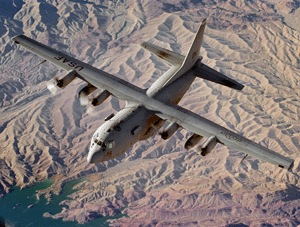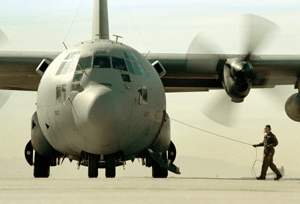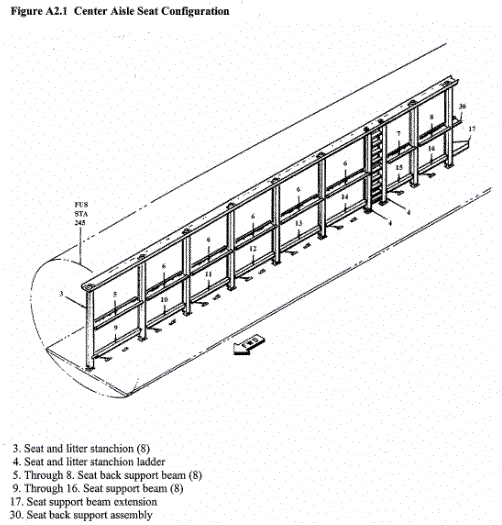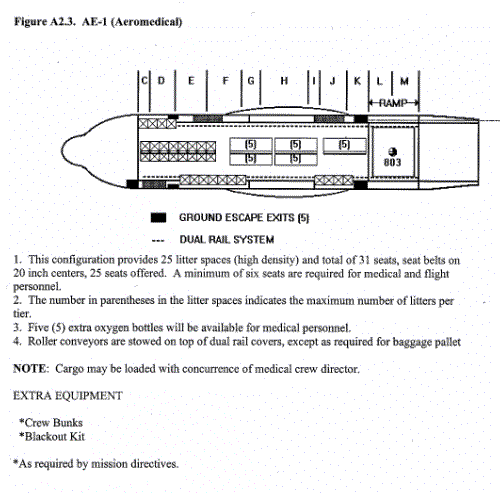|

EC-130E

EC-130E
|
This aircraft is a four-engine,
turbo-propeller driven aircraft with a pressurized, air-conditioned cabin
and a self-contained loading ramp.
The C-130 can land on and take off from short runways. It can also be
used on landing strips such as those found in forward base operations. Its
normal use is for tactical and assault airlift. The C-130 can also be used
for strategic airlift missions, if required.
The C-130 is a versatile aircraft, and can be configured in many ways.
It is the internal configuration that determines its' medical airlift
capability.
Litters may be placed on the cargo floor and secured to the floor to
avoid patient injury in the event of turbulence.
Using center line stanchions and straps, litters may be stacked
vertically along the length of the centerline, with web seats for
ambulatory patients (and a few litter attachment points) toward the
outside of the cabin.
Maximum capacity is 70 litters with no ambulatory patients, 85
ambulatory patients with no litters, or a mixture. A variety of
configurations are shown here.
With Air Force C-130 MEDEVAC aircraft, a medical crew is typically
provided, consisting of two flight nurses and three aeromedical evacuation
technicians. Medical supplies vary but are usually tailored for the
mission.
Coast Guard C-130's are usually not configured for MEDEVAC, usually do
not carry any crewmembers with medical training, and usually do not carry
any medical supplies other than the first aid kits for the aircrew.
Patients transported on these aircraft will need attendants to accompany
them and to provide medical assistance in-flight, if needed. All necessary
medical supplies should be sent with the patients.


Approved for public release; Distribution is unlimited.
The listing of any non-Federal product in this CD is not an
endorsement of the product itself, but simply an acknowledgement of the source.
Operational Medicine 2001
Health Care in Military Settings
Bureau of Medicine and Surgery
Department of the Navy
2300 E Street NW
Washington, D.C
20372-5300 |
Operational Medicine
Health Care in Military Settings
CAPT Michael John Hughey, MC, USNR
NAVMED P-5139
January 1, 2001 |
United States Special Operations Command
7701 Tampa Point Blvd.
MacDill AFB, Florida
33621-5323 |
This web version is provided by
The Brookside Associates Medical Education Division.
It contains original contents from the official US Navy NAVMED P-5139, but has
been reformatted for web access and includes advertising and links that were not
present in the original version. This web version has not been approved by the
Department of the Navy or the Department of Defense. The presence of any
advertising on these pages does not constitute an endorsement of that product or
service by either the US Department of Defense or the Brookside Associates. The
Brookside Associates is a private organization, not affiliated with the United
States Department of Defense.
Contact Us · · Other Brookside
Products
|



